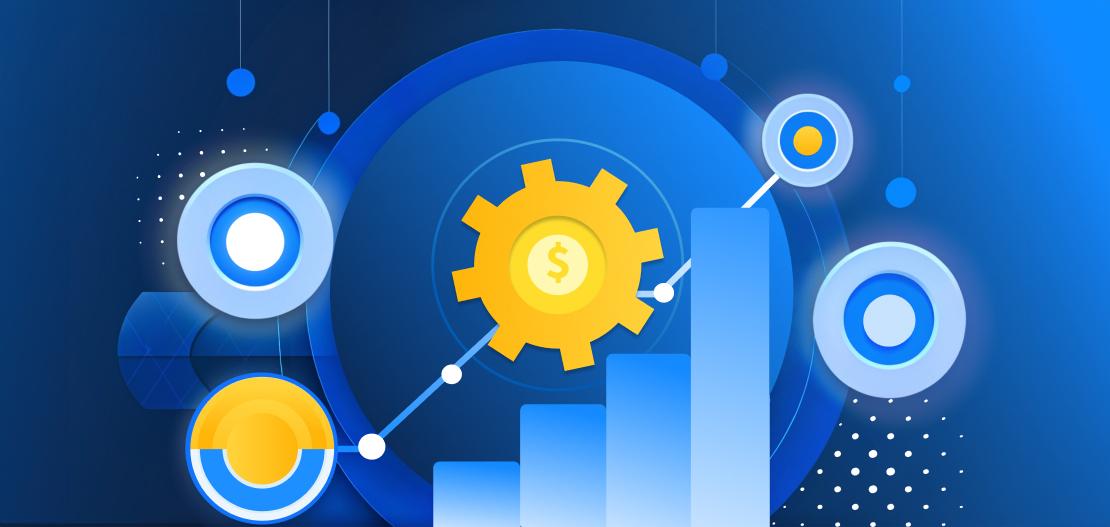We are moving on to the final part of our story from Alexey Nesterenko and FB Group that deployed a business automation system for the retail trade company. Approaches described in this series of articles can be adopted in various areas of business related to the sale of goods and customer service.
In the first article of the series, we talked about how the customer's warehouse management was automated. The second article was focused on monitoring customer prices in real time. And for dessert, we will have automation of financial transactions and budget management.
Step #3: Now We Go To the Money Flow
One of the stages of the project was to optimize the financial and budgeting system. Can you tell more about it?
Yes, after we had finished working on inventory management, we turned our attention to the company’s balance. Mutual payments sometimes include a currency component, and we needed an automated update of mutual payments that would take into account the new exchange rates. One of the goals, also, was for the owner to be able to see the balance displayed automatically - for example, costs calculated every night. So that he sees it in retrospect: for today, for yesterday, and so on.
And the next logical step was budget management - the sales budget, purchasing budget and expenses. It was a standard scheme where you can budget for sales and expenses for the year ahead, including plans for opening new stores, investments and so on.
All this works in real time throughout the year. Once a year, usually in Summer, the budget is reviewed. Our system made it possible not to spend money on something that was not agreed upon. And you can always control the balance for each expense item. There is no need for the owner to approve current expenses every month, or to be distracted by additional approval of details within the approved budget.
The next stage was cash flow management. The company had a cash flow plan for 2-3 months - including all payments for delivered goods and budget expenses. The result was a fairly large pool of documents on planned income and planned expenses.
Have you analyzed previous similar expenses or developed a new system from scratch?
We invented a mechanism that allowed any expense item to be paid according to certain parameters. You can pay 100% on a certain day, or pay a third on the 10th, 20th and 30th. It was important for the owner to pay wages on time, that is, to incur basic expenses. And, of course, from practice he understood how and when to pay.
Suppose office rent is always paid on a contractual basis. As a rule, the company pays the obligatory payments by the 20th, and then some free cash balance appears. So we developed a certain order that was introduced as settings in the system.
The system is built in such a way that if the balance control in the main cash flow report is green, this means that there is money available. Cash flow management was based on the balance of financial resources. If there are not enough of them, then communication with the bank is required. And the second point - if there are not enough financial resources, you need to understand what exactly can be transferred and paid later. The system was also self-adjusting - it provided synergy between sales plans, purchasing plans, and own purchases. And we always understood whether there was enough money.
In the budgeting system, we created a plan for the year. Let's take a sample report for 5 months. We have a plan and a fact for the period January-April... In May, the system will show you your expenses based on what has already been spent at the moment, and what other expenses we need to make. That is, the system can show you the “future” fact for this month according to certain rules. For example, if we spent 2 thousand for office supplies, but it was planned to spend 1000 by that date and 9 thousand is planned for future days, then the system will show 11 thousand as a fact.
And here is the most interesting feature. The system analyzed these 5 months as a plan and a fact for a specific store. We could understand, in terms of specific types of products, how well the product was sold.
We could see a planned fact, not a plan, but a planned fact. And as a result, the system showed the future sales result based on the current fact. This could show us whether the plans were made correctly, or we had problems with sales in a particular store or sales of a particular brand. Thus, the planned fact provided information on what can happen to the business if we take current sales as a basis.
Is this what some systems call predictive analytics?
Yes, in this case we have developed a similar algorithm for a specific business and discussed all the details with the owner. While we were establishing and finalizing the system, the business continued to grow - about 10-15 new points of sale were opened, a competitor was purchased, and so on. As a result, the system was dynamically scaled up to 50-60 stores. It is transparent, scalable and flexible so nothing can prevent your business from growing and earning more, increasing the assortment matrix, and opening new branches. It also allows businesses to effectively spend time of the key employees — on analysis, business development, and making decisions.
Automation system described in this story was based on the low-code 1C:Enterprise platform that allows building business solutions fast and with minimum development effort. Learn more here.
